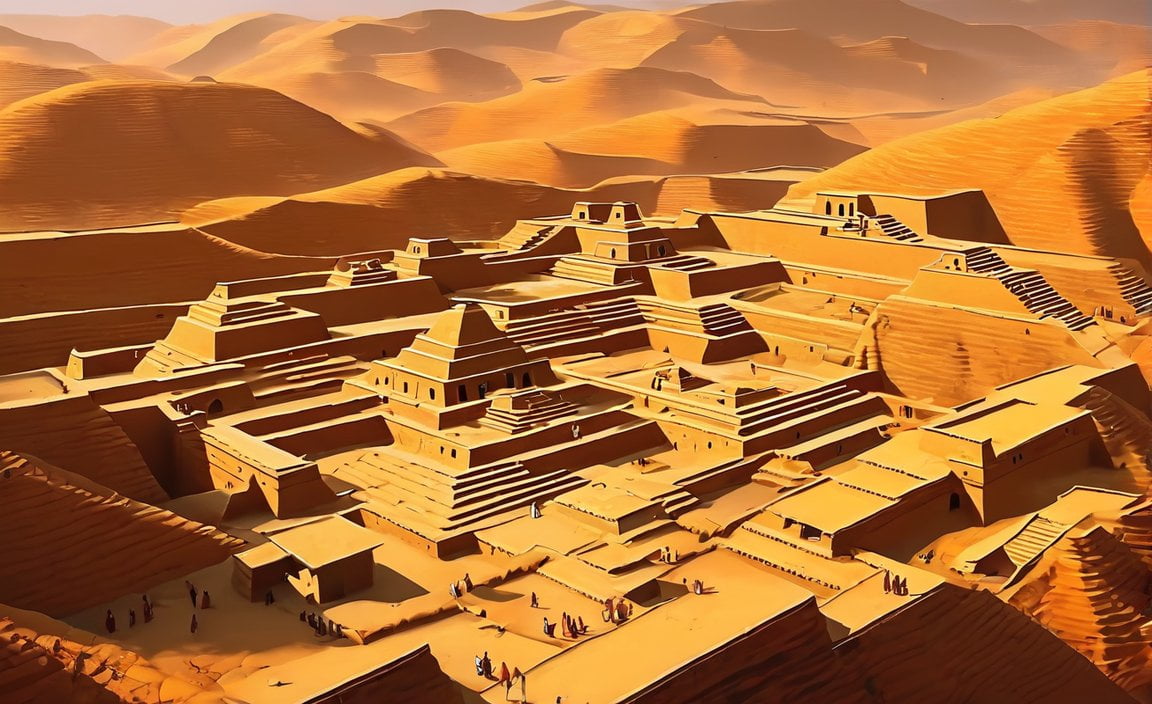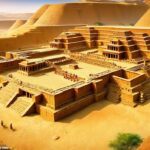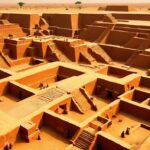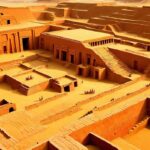The Indus Valley Civilization, one of the most fascinating ancient civilizations, holds secrets waiting to be unearthed. In this article, we will delve into the enigmatic world of the Indus Valley Civilization and uncover five lesser known facts that will leave you astounded. From their advanced urban planning to their mysterious script, this ancient civilization has intrigued historians and archaeologists for years. Join us as we explore the hidden wonders of the Indus Valley Civilization and shed light on its captivating secrets.
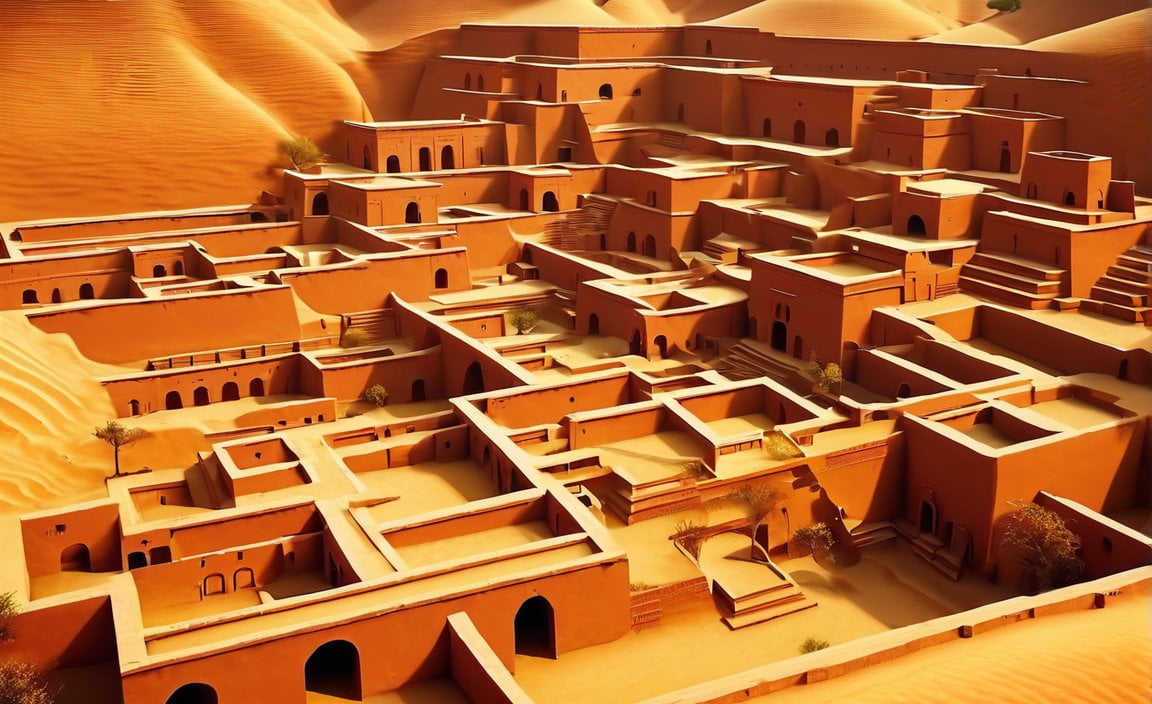
Key Takeaways:
- The Indus Valley Civilization was larger in size compared to the ancient Egyptian civilization.
- The first recorded note of the ruins of the Indus Valley Civilization was made by a British army deserter.
- The civilization was known for its advanced craftsmanship skills.
- The Indus Valley Civilization is credited with giving birth to the first dentist.
- The collapse of the civilization remains a mystery.
- Seals were used as a form of identification in the Indus Valley Civilization.
5 Lesser Known Facts About the Indus Valley Civilization
The Indus Valley Civilization, also known as the Harappan Civilization, is often overshadowed by other ancient civilizations like Egypt and Mesopotamia. However, there are some fascinating secrets about this enigmatic civilization that are lesser known. In this article, we will delve into five intriguing facts that shed light on the wonders of the Indus Valley Civilization.
1. Advanced Urban Planning and Sanitation
One of the lesser known facts about the Indus Valley Civilization is its remarkable urban planning. The cities of Harappa and Mohenjo-daro, two major centers of this civilization, were planned with precision. They displayed an advanced understanding of city planning, with well-organized streets, drainage systems, and even public baths. It is believed that Harappa had a population of over 40,000, making it larger than the ancient Egyptian civilization.
2. The Clue Left by a British Army Deserter
The first recorded note of the ruins of the Indus Valley Civilization was made by a British army deserter named Charles Masson. In the early 19th century, Masson stumbled upon the ruins of Harappa and Mohenjo-daro while traversing through the region. His documentation and sketches of the ancient cities provided crucial evidence for later archaeological studies and ultimately led to the rediscovery of this once-thriving civilization.
3. Advanced Craftsmanship Skills
The Indus Valley Civilization flourished with advanced craftsmanship skills. Archaeological excavations have unearthed intricate artifacts made from various materials, such as bronze, copper, and terracotta. The craftsmen of this civilization showcased their expertise in pottery-making, jewelry crafting, and metallurgy. Their attention to detail and artistic abilities are evident in the delicate carvings and beautiful jewelry found at these ancient sites.
4. The Birthplace of the First Dentist
Surprisingly, the Indus Valley Civilization is credited with giving birth to the world’s first dentist. Archaeologists have discovered evidence of early dental practices in the form of drilled teeth. These ancient dentists used bow drills, made out of copper or flint, to treat dental problems such as cavities. This discovery reveals the civilization’s advanced medical knowledge and their focus on maintaining oral health.
5. The Mysterious Collapse
Despite the numerous findings and insights into the Indus Valley Civilization, its collapse remains a mystery. The reasons behind the decline of this once-thriving civilization are still debated among historians and archaeologists. Various theories propose factors such as climate change, invasion, or the collapse of trade networks. However, the true cause of their downfall remains elusive, adding an air of mystique to this ancient civilization.
From the advanced urban planning and sanitation systems to their remarkable craftsmanship skills and dental practices, the Indus Valley Civilization continues to captivate historians and enthusiasts alike. Although its mysteries remain unsolved, these lesser known facts remind us of the remarkable achievements of this ancient civilization and the valuable insights they offer into our shared past.
Did you know that Vatican City is the smallest independent state in the world? Discover more fascinating facts about Vatican City here.
Uncover the mysteries of the ancient Indus Valley Civilization with these 5 interesting facts here.
Venture into the enchanting Prince Edward Island and learn 5 intriguing facts about this charming destination here.
Explore the vast and diverse African savanna with these 5 captivating facts here.
Uncovering 5 Fascinating Secrets of the Indus Valley Civilization
The Indus Valley Civilization, also known as the Harappan Civilization, is a captivating ancient culture that continues to intrigue historians and archaeologists. While many are aware of its existence, there are several lesser-known facts about this enigmatic civilization that are worth exploring. Let’s delve into 5 fascinating secrets of the Indus Valley Civilization and unravel the mysteries.
1. The First Recorded Note of Its Ruins Was Made by A British Army Deserter
Imagine stumbling upon the remnants of an ancient civilization and being the first to document it. This was precisely the case for James Lewis, a British East India Company soldier who deserted the army. In his 1842 book, Lewis described his encounter with the ruins of the Indus Valley Civilization while traveling through the Punjab province in British India. This serendipitous discovery played a crucial role in rekindling interest in the ancient civilization.
2. It Is The Largest of The Four Great Ancient Civilizations
When we think of great ancient civilizations, the Indus Valley often remains overshadowed by Mesopotamia, Egypt, and China. However, it is time to acknowledge the grandeur of the Indus Valley Civilization. With an estimated population surpassing five million people at its peak, it proudly holds the title of being the largest of the four great ancient civilizations. Its magnificence is a testament to the sophistication and accomplishments of this remarkable society.
3. Indus Valley Cities Were Engineering Masterpieces
The cities of the Indus Valley Civilization were engineering marvels ahead of their time. They boasted sophisticated drainage systems, well-laid-out streets, and an abundance of public and private wells. The most intriguing aspect is the organized grid pattern that permeated these cities, indicating meticulous city planning and management. Such urban planning is a testament to the advanced knowledge and architectural brilliance of the civilization.
4. It Had A More Advanced Sanitation System Than Many Contemporary Urban Cities
While we often associate advanced sanitation systems with modern cities, the Indus Valley Civilization was well ahead of its time in this aspect. The cities of this civilization were equipped with an intricate network of underground sewers, connected to individual houses. This level of urban planning and remarkable public health awareness showcases the civilization’s commitment to cleanliness and efficient waste management. It is truly awe-inspiring to witness their hygienic practices thousands of years ago.
5. The People of Indus Valley Were Peaceful and Probably Egalitarian
Contrary to the narrative of conquest and conflict that often surrounds ancient civilizations, the Indus Valley Civilization presents a different picture. Evidence suggests that this civilization was remarkably peaceful and had egalitarian qualities. The absence of substantial evidence of large-scale warfare or fortifications, along with the relatively equal distribution of wealth, indicates a society that valued harmony and equality. Their peaceful nature and inclusive ideals provide a unique perspective on social dynamics in ancient times.
Key Takeaways:
- The discovery of the Indus Valley Civilization was first documented by James Lewis, a British army deserter.
- The Indus Valley Civilization is the largest of the four great ancient civilizations, with a population over five million at its peak.
- The cities of the Indus Valley were engineering masterpieces, showcasing advanced urban planning.
- The civilization had a more advanced sanitation system than many contemporary urban cities, with underground sewers.
- Evidence suggests that the people of the Indus Valley Civilization were peaceful and had a likely egalitarian society.
Sources:
1. Learnodo Newtonic: 10 Interesting Facts About The Indus Valley Civilization
2. Britannica: Indus civilization | History, Location, Map, Artifacts
Uncovering 5 Fascinating Secrets of the Indus Valley Civilization
Have you ever been intrigued by the mysteries of ancient civilizations? The Indus Valley Civilization, also known as the Harappan Civilization, is one such enigmatic civilization that has captivated historians and archaeologists for decades. In this article, we will delve into 5 lesser known facts about the Indus Valley Civilization that will surely fascinate you. So, let’s embark on a journey to uncover these secrets!
1. Advanced Urban Planning and Technology
The people of the Indus Valley Civilization were pioneers in urban planning. Their cities, such as Harappa and Mohenjo-daro, were planned with remarkable precision. They had well-organized streets laid out in a grid-like pattern, advanced drainage systems, and public baths. In fact, the Great Bath in Mohenjo-daro was a large public pool used for ritual bathing and socializing. It truly showcases their sophisticated engineering skills and the emphasis they placed on hygiene and communal activities[^1][^2].
2. Enigmatic Script: The Unsolved Puzzle
One of the most intriguing aspects of the Indus Valley Civilization is their script. They used seals as a form of communication and identification, some of which have pictographic writing that remains undeciphered to this day. Despite numerous attempts by scholars, the script’s true meaning and the language it represents remain a mystery. Unlocking the secrets of this ancient script could potentially provide a wealth of knowledge about the civilization’s culture, religion, and daily life[^7].
3. Advanced Systems of Drainage, Sanitation, and Measurement
The Indus Valley Civilization was remarkably advanced for its time in terms of infrastructure. They had a complex system of drainage and sanitation, which included underground sewers. This system ensured the efficient disposal of waste, maintaining a clean and healthy environment for the inhabitants. Additionally, they had accurate systems of measurement, as evidenced by the standardized brick sizes used in their construction projects, showcasing their advanced architectural and engineering skills[^4].
4. Intertwined Trade Networks
Trade played a significant role in the Indus Valley Civilization’s prosperity. Excavations have revealed traces of goods from distant regions, indicating their involvement in long-distance trade. They had access to valuable resources such as copper, gold, and semi-precious stones, which were obtained through extensive trade networks. This reflects their economic prowess and the interconnectedness of ancient societies across vast geographic regions[^2].
5. Mysterious Collapse and Possible Causes
The decline and ultimate collapse of the Indus Valley Civilization continue to puzzle historians. Various theories have been proposed, including climate change, invasion by foreign tribes, or the breakdown of trade networks. The exact cause remains uncertain, and it is likely that a combination of factors contributed to their downfall. Studying their collapse provides valuable insights into the fragility of even the most advanced civilizations and the impact of external and internal forces[^5].
Key Takeaways:
– The Indus Valley Civilization showcased advanced urban planning and technology, with well-organized streets, drainage systems, and public baths[^1][^2].
– The enigmatic script used by the Indus Valley Civilization remains undeciphered, holding secrets about their culture and daily life[^7].
– Advanced systems of drainage, sanitation, and measurement highlight the civilization’s sophistication[^4].
– Extensive trade networks played a vital role in the civilization’s prosperity and resource acquisition[^2].
– The mysterious collapse of the Indus Valley Civilization remains a topic of debate, with potential causes including climate change, invasion, and trade network disruption[^5].
Sources:
– Learnodo Newtonic
– academiamag.com
5 Lesser Known Facts About the Indus Valley Civilization
The Indus Valley Civilization, also known as the Harappan Civilization, is an ancient civilization that often goes unnoticed in comparison to other renowned ancient civilizations. However, this enigmatic civilization holds many fascinating secrets that are lesser known to the world. In this article, we will delve into these intriguing facts, shedding light on the advanced and mysterious aspects of the Indus Valley Civilization.
Fact 1: The First Recorded Note of the Ruins
The rediscovery of the Indus Valley Civilization can be attributed to a British army deserter named Charles Masson, who made the first recorded note of the ruins in 1826[^1^]. Masson’s documentation played a crucial role in unraveling the mysteries of this ancient civilization.
Fact 2: Advanced Urban Planning and Construction
The people of the Indus Valley were pioneers in urban planning and construction. They built the world’s first planned towns and cities, showcasing their advanced skills in urban development[^2^]. Their cities, such as Harappa and Mohenjo-daro, boasted well-organized streets, drainage systems, and public baths, indicating their sophisticated understanding of city design.
Fact 3: Exceptional Craftsmanship
The Indus Valley Civilization was known for its exceptional craftsmanship skills. The people of this civilization showcased their artistry through beautiful pottery, intricate jewelry, and exquisite sculptures[^1^]. Their creativity and skill in these crafts offer a glimpse into their rich culture and artistic expressions.
Fact 4: Advanced Systems and Technology
The Indus Valley Civilization was far ahead of its time when it came to systems and technology. They had advanced systems of drainage, sanitation, and measurement[^1^]. The organized grid patterns, sophisticated sanitation systems, and standardized brick sizes used in their constructions speak volumes about their engineering prowess.
Fact 5: Unraveling the Indus Valley Script
One of the greatest enigmas of the Indus Valley Civilization is their script, which remains undeciphered to this day. The civilization used seals as an identifier and a form of communication, and some of these seals bear pictographic writing that is yet to be fully understood[^1^]. Unlocking the meaning behind this script could provide insights into their language, culture, and daily life.
Key Takeaways:
- The ruins of the Indus Valley Civilization were first recorded by British army deserter Charles Masson in 1826[^1^].
- The civilization’s advanced urban planning and construction included well-organized streets, drainage systems, and public baths[^2^].
- The Indus Valley people were skilled craftsmen, producing beautiful pottery, jewelry, and sculptures[^1^].
- They had advanced systems of drainage, sanitation, and measurement, showcasing their sophistication[^1^].
- The script used by the civilization on their seals remains undeciphered, holding the key to unlocking their language and culture[^1^].
Sources:
[^1^]: Interesting fun facts about Indus Valley Civilization
[^2^]: What Is The Indus Valley Civilization
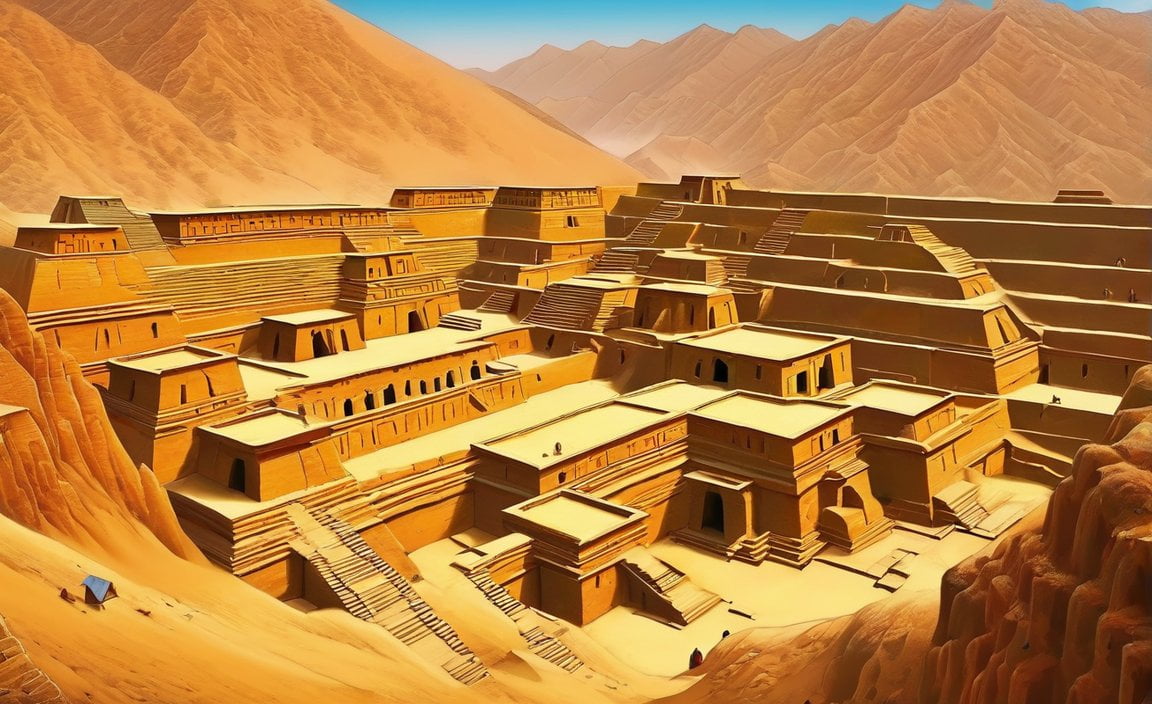
FAQ
Q1: When was the first recorded note of the ruins of the Indus Valley Civilization made?
A1: The first recorded note of the ruins of the Indus Valley Civilization was made in 1826 by a British army deserter.
Q2: What were the engineering masterpieces of the Indus Valley Civilization?
A2: The cities of the Indus Valley Civilization were engineering masterpieces. They had sophisticated drainage systems with well-laid-out streets, as well as public and private wells. The cities were also organized into a grid pattern.
Q3: Did the Indus Valley Civilization have a more advanced sanitation system than other contemporary urban cities?
A3: Yes, the Indus Valley Civilization had a more advanced sanitation system than many contemporary urban cities. They had a network of underground sewers that were connected to individual houses.
Q4: Were there any large-scale warfare or fortifications in the Indus Valley Civilization?
A4: No, there is very little evidence of large-scale warfare or fortifications in the Indus Valley Civilization. The absence of weapons and the relatively equal distribution of wealth indicate a more peaceful and egalitarian society.
Q5: What caused the collapse of the Indus Valley Civilization?
A5: The collapse of the Indus Valley Civilization remains a mystery. Possible causes include climate change, invasion, or disease.
- Sept 31 Myth: Unveiling Calendar Secrets - March 18, 2025
- How Long & Till December 18, 2025: Accurate Countdown Guide - March 18, 2025
- Discover Japanese Artists: A Complete History - March 18, 2025
